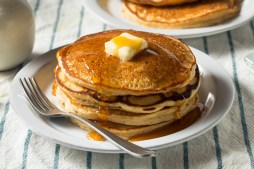Top 5 Essential Tips for Mastering Breadmaking at Home
Baking bread at home is not only a delightful activity but also a rewarding experience that fills your kitchen with wonderful aromas. Whether you are an absolute beginner or looking to refine your skills, mastering the art of breadmaking can be achieved with some simple tips. In this article, we will explore the top five essential tips that will help you become a confident home baker.
Start with Quality Ingredients
The foundation of great bread lies in its ingredients. Always choose high-quality flour, preferably all-purpose or bread flour, as they contain the right amount of protein needed for good gluten development. Fresh yeast is essential too; if possible, opt for active dry yeast or instant yeast instead of older packets that may have lost potency. Don’t forget about other ingredients: use filtered water and natural salt to ensure the best flavor and texture in your bread.

Master the Art of Kneading
Kneading is crucial in developing gluten, which gives bread its structure and chewiness. You don’t need to knead for hours; just 10-15 minutes of focused kneading can make a significant difference. Use the heel of your hand to push down and forward on the dough, then fold it back over itself and repeat this process until you achieve a smooth and elastic dough. If you have a stand mixer, you can also use it with a dough hook attachment for consistency.
Pay Attention to Proofing Times
Proofing allows your dough to rise by giving yeast time to ferment sugars into carbon dioxide—this is what makes your bread fluffy. Be patient during this stage: let your dough double in size during the first proof (bulk fermentation) before shaping it into loaves or rolls for the second proof (final fermentation). Keep an eye on temperature; warmer environments speed up proofing while cooler ones slow it down.
Create Steam in Your Oven
Steam plays an important role in achieving that perfect crust on your homemade bread. To create steam while baking, place a shallow pan filled with water at the bottom of your oven before preheating it along with your baking stone or sheet (if using). Alternatively, spritz water directly onto the sides of the oven when placing your loaves inside—this helps establish that beautiful crust while keeping moisture trapped inside.
Don’t Skip Cooling Time
After removing your freshly baked loaf from the oven, resist slicing into it right away. Allowing bread to cool completely on a wire rack ensures proper texture development inside by letting steam escape without making it soggy. This cooling period generally takes about an hour but is worth every minute—your patience will reward you with better flavor and structure.
By following these five essential tips—starting with quality ingredients, mastering kneading techniques, being mindful about proofing times, creating steam during baking, and allowing proper cooling—you’ll be well on your way to mastering home breadmaking. So roll up those sleeves and enjoy creating delicious homemade breads that will impress family and friends.
This text was generated using a large language model, and select text has been reviewed and moderated for purposes such as readability.











